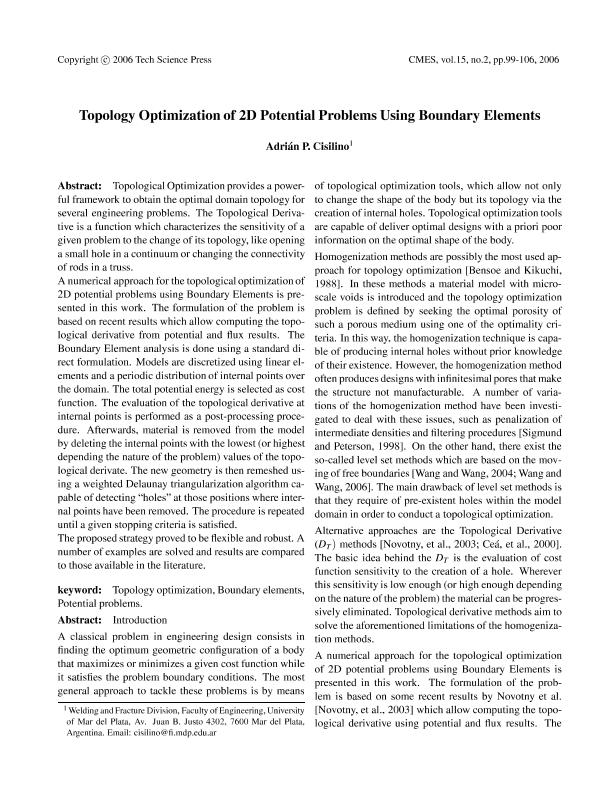Artículo
Topology optimization of 2D potential problems using boundary elements
Fecha de publicación:
12/2006
Editorial:
Tech Science Press
Revista:
Cmes-computer Modeling In Engineering & Sciences
ISSN:
1526-1492
e-ISSN:
1526-1506
Idioma:
Inglés
Tipo de recurso:
Artículo publicado
Clasificación temática:
Resumen
Topological Optimization provides a powerful framework to obtain the optimal domain topology for several engineering problems. The Topological Derivative is a function which characterizes the sensitivity of a given problem to the change of its topology, like opening a small hole in a continuum or changing the connectivity of rods in a truss. A numerical approach for the topological optimization of 2D potential problems using Boundary Elements is presented in this work. The formulation of the problem is based on recent results which allow computing the topological derivative from potential and flux results. The Boundary Element analysis is done using a standard direct formulation. Models are discretized using linear elements and a periodic distribution of internal points over the domain. The total potential energy is selected as cost function. The evaluation of the topological derivative at internal points is performed as a post-processing procedure. Afterwards, material is removed from the model by deleting the internal points with the lowest (or highest depending the nature of the problem) values of the topological derivate. The new geometry is then remeshed using a weighted Delaunay triangularization algorithm capable of detecting “holes” at those positions where internal points have been removed. The procedure is repeated until a given stopping criteria is satisfied. The proposed strategy proved to be flexible and robust. A number of examples are solved and results are compared to those available in the literature.
Archivos asociados
Licencia
Identificadores
Colecciones
Articulos(INTEMA)
Articulos de INST.DE INV.EN CIENCIA Y TECNOL.MATERIALES (I)
Articulos de INST.DE INV.EN CIENCIA Y TECNOL.MATERIALES (I)
Citación
Cisilino, Adrian Pablo; Topology optimization of 2D potential problems using boundary elements; Tech Science Press; Cmes-computer Modeling In Engineering & Sciences; 15; 2; 12-2006; 99-106
Compartir
Altmétricas




